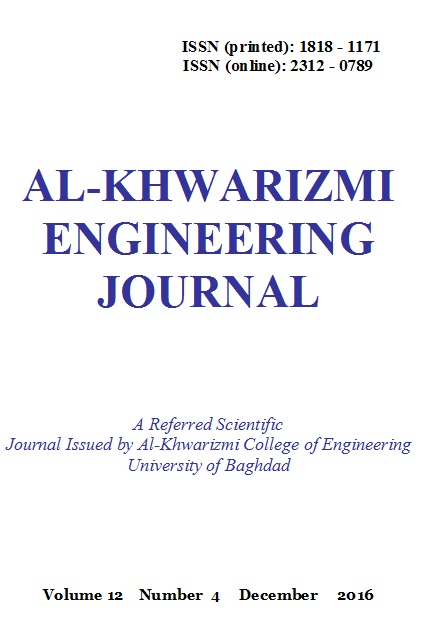Fabrication and Characterization of Tri Metal Oxides by Chemical Spray Pyrolysis Technique as a Gas Sensor
DOI:
https://doi.org/10.22153/kej.2016.05.007Keywords:
Zinc stannate, cadmium stannate, gas sensor, ternary metal oxides, spray pyrolysis, pollutant gases, gas sensitivity, XRDAbstract
In this research tri metal oxides were fabricated by simple chemical spray pyrolysis technique from (Sn(NO3)2.20 H2O, Zn(NO3)2.6 H2O, Cd(NO3)2.4 H2O) salts at concentration 0.1M with mixing weight ratio 50:50 were fabricated on silicon substrate n-type (111). (with & without the presence of grooves by the following diemensions (20μm width, 7.5μm depth) with thickness was about ( 0.1 ±0.05 µm) using water soluble as precursors at a substrate temperature 550 ºC±5, with spray distance (15 cm) and their gas sensing properties toward H2S gas at different concentrations (10,50,100,500 ppmv) in air were investigated at room temperature which related with the petroleum industry. Furthermore structural and morphology properties were inspecting. Experimental results show that the Zn2SnO4 and Cd2SnO4 thin films were achieved from the used salts and samples gas sensitivity which improved with the presence of substrate grooves. Which make the sensor suitable for the detection of lower .concentrations of hazard H2S gas in the petroleum industry.
Downloads
Downloads
Published
Issue
Section
License
Copyright: Open Access authors retain the copyrights of their papers, and all open access articles are distributed under the terms of the Creative Commons Attribution License, which permits unrestricted use, distribution, and reproduction in any medium, provided that the original work is properly cited. The use of general descriptive names, trade names, trademarks, and so forth in this publication, even if not specifically identified, does not imply that these names are not protected by the relevant laws and regulations. While the advice and information in this journal are believed to be true and accurate on the date of its going to press, neither the authors, the editors, nor the publisher can accept any legal responsibility for any errors or omissions that may be made. The publisher makes no warranty, express or implied, with respect to the material contained herein.
















